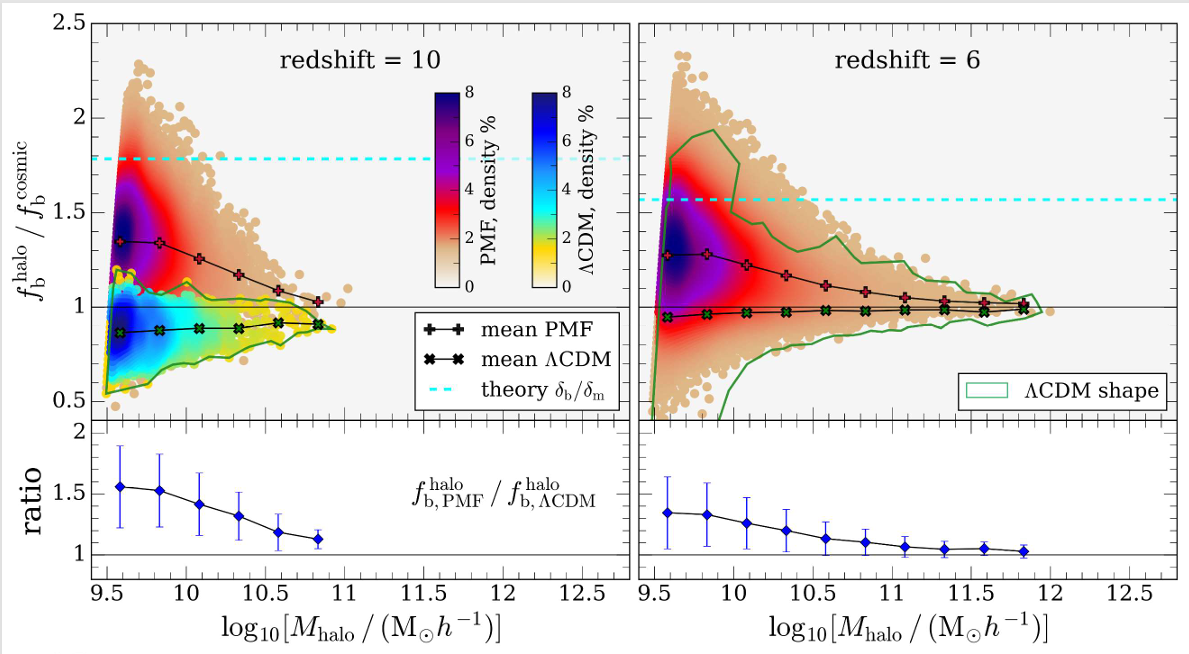In this work we focus on large scales and post-recombination universe. Here PMFs enhance baryon perturbations and these baryon perturbations are not affected by turbulence. Consequently, dark matter falls into baryon potential well to form halos. This effect should cause high redshift halos to have much larger baryon fraction than the cosmic average. Below we show a scatter plot of halos as a function of their baryon fraction and their mass. The results are from a simulation with 1 nG PMFs with almost scale-invariant spectrum.

In the above figure one can see that at high redshift the the baryon fraction of low mass halos is significantly enhanced compared to standard cosmology. However, that difference is suppressed at low redshifts. This could have interesting implications for high redshifts systems observed by JWST. However, the analysis here is subject to change as our simulation do not incorporate AGN feedback or galaxy outflows.
